The Tata Nexon EV has been a blockbuster, and for all the right reasons – it is cleverly packaged in terms of size and space, and it sensibly balances affordability and premium features on one hand, and battery size and overall performance on the other. Also, contrary to the notion that its usage will be limited within city confines, owners are using their Nexon EVs to the fullest for both intra-city and inter-city commutes and are reaping benefits of its lower running cost (compared to internal combustion engine vehicles). These EV owners have also played the role of brand ambassadors and have been rather vocal about their ownership experiences to influence the ones sitting on the fence. It’s no surprise then that this all-electric SUV is the bestselling EV in the country and it plays a key role in accelerating the adoption of electric vehicles in India at a mass-market level.

Tata has now gone a step further and launched the Nexon EV Max, which gets a larger battery, is packed with more safety and premium features, and promises a much better range. All these come at a premium of Rs 1.54 lakh over the standard version, which continues to be sold alongside.
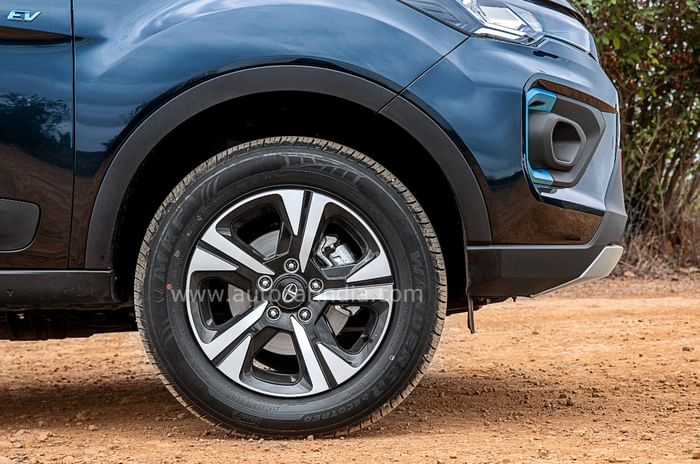
To accommodate the new 40.5kWh battery, the entire floor pan has been reworked. As this pack has significantly grown in size, ground clearance is now 15mm lower than the standard Nexon EV’s 205mm, and it also eats into the cabin floor, which is about 10mm higher now. Further, the Max now tips the scales at 1,500kg, gaining 100kg over the standard version – 70 percent of which is on account of the 33 percent larger battery, while the remaining 30 percent is due to the new features it packs.
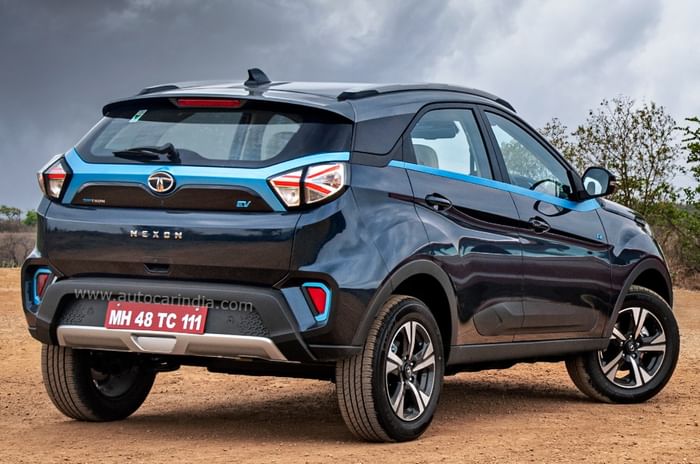
It’ll take a keen eye to distinguish this long-range version from the standard car. Prominent visual differentiators are the EV Max’s new 16-inch diamond-cut alloys and the new Intensi-Teal paint shade, which is one of the three exclusive options, the other two being Daytona Grey and Pristine White; all of which come with a two-tone roof as standard. These aside, there isn’t a single ‘Max’ badging or livery, and just like the standard version, it continues to feature blue highlights all across.
Tata Nexon EV Max: What is it like inside?
The Max version’s light coloured cabin with blue highlights remains almost similar to the standard car; the key word being ‘almost’. On closer inspection, you’ll spot a very unique tri-arrow pattern on the black dashboard applique, which tastefully fades into a lovely dark shade of blue towards the sides. The drive selector rotary knob feels very premium with a knurled texture, and it also operates with a very satisfying click. Even though its touch and feel have enhanced, the selector is still very slow in operation, and this can get particularly annoying while making quick three-point turns or while parking in a tight spot. Thankfully, this time around, it embeds a nice and clear display, which indicates whether you’ve selected P, R, N or D, and it’ll even change colours based on the driving mode you’ve selected – red for Sport, blue for City and green for Eco, with the last mode being a new addition. An electronic parking brake switch replaces the handbrake, there’s an auto hold function, as well as switches to adjust the regeneration levels. Cup holders have been replaced by a wireless charging pad, and an air purifier is now integrated into the infotainment system.

Like the standard car, the beige leatherette front seats sport blue stitching and a tri-arrow pattern. While these are comfortable by themselves, what takes comfort up several notches is the new seat ventilation function – it’s a welcome addition in a tropical climate like ours and is pretty effective too. In the fastest fan speed setting, however, the seat blowers can get a tad too loud.

As mentioned earlier, the cabin floor has been raised by about 10mm and, as a result, rear passengers are seated in a knees-up position, which isn’t the case with the standard Nexon EV. This seating position leaves taller occupants with no thigh support, and that isn't very comfortable. What’s nice is that there is abundant knee and head room and so is space for three.
The EV Max’s boot space hasn’t been altered either and is still a respectable 350 litres, with the option to fold down rear seats in a 60:40 ratio. Tata also offers a tyre repair kit in addition to the spare tyre, which is neatly tucked beneath the boot floor.
Tata Nexon EV Max: what is it like to drive?
The talking point of the Nexon EV Max is the all-new 40.5kWh lithium-ion battery pack, which is 33 percent larger than that of the standard Nexon EV. In its sportiest setting, the Nexon EV Max’s motor produces 143hp and 250Nm, a gain of 14hp and 5Nm over the standard version. Despite being more powerful, it has also gained 100kg of weight, and this results in the Sport mode’s performance feeling quite similar to the standard version. It is certainly the most entertaining mode on offer, but it also drains the battery’s charge quicker. For daily commute, throttle responses feel a touch too aggressive, so this mode is best left for spirited drives. Its sprinting abilities remain identical to the standard car, with a 0-100kph time of 9.4sec, however, it now hits a top speed of 137kph, which is 17kph higher than the standard EV’s 120kph.
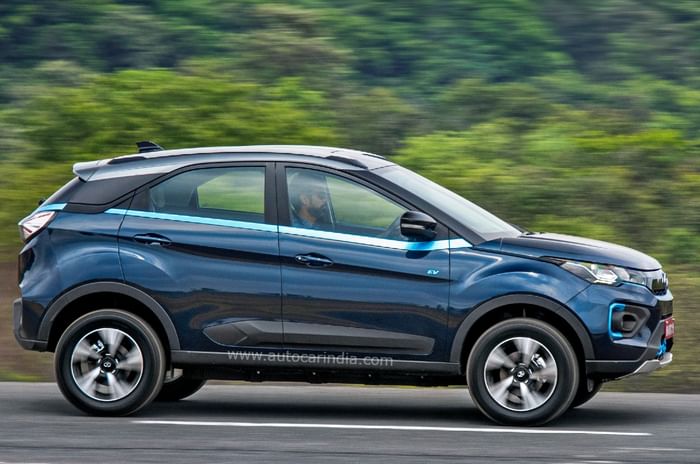
While the standard Nexon EV has just two modes – City and Sport – the Max adds in a third one, Eco mode. What’s interesting is that Tata has limited both, City and Eco modes to approximately 97hp and 170Nm of torque. The difference between these two modes is down to their throttle responses, with Eco being a tad duller than City. Owing to the EV’s instant torque delivery, the two modes feel more than adequate for the daily urban grind and to keep up with fast moving vehicles on the highways. Further demonstrating the similarity between the Eco and City modes are their flat-out 0-100kph acceleration times of 14.3sec and 14.1sec, respectively, which are much quicker than the 16.1sec time of the 30.2kWh version’s City mode.
| Tata Nexon EV Max acceleration as tested (0-110kph) | |||
|---|---|---|---|
| Speed | Sport | Eco | City |
| 0-10 kph | 0.8 sec | 1.0 sec | 1.1 sec |
| 0-20 kph | 1.5 sec | 2.0 sec | 2.1 sec |
| 0-30 kph | 2.3 sec | 3.0 sec | 3.0 sec |
| 0-40 kph | 3.0 sec | 4.0 sec | 4.1 sec |
| 0-50 kph | 3.8 sec | 5.2 sec | 5.2 sec |
| 0-60 kph | 4.6 sec | 6.5 sec | 6.4 sec |
| 0-70 kph | 5.5 sec | 8.0 sec | 7.9 sec |
| 0-80 kph | 6.6 sec | 9.7 sec | 9.6 sec |
| 0-90 kph | 7.9 sec | 11.8 sec | 11.7 sec |
| 0-100 kph | 9.4 sec | 14.3 sec | 14.1 sec |
| 0-110 kph | 11.1 sec | 17.2 sec | 17.1 sec |
There are four levels of regenerative braking to choose from, including a level zero or regeneration off, which allows users to lift off the accelerator and let the car coast without any sudden deceleration or loss in momentum. For buyers switching over from ICE vehicles, level one will feel the most natural, as deceleration is gradual when you lift your leg off the throttle. Level two feels stronger and level three is the strongest, the latter feeling as though the brakes have been applied gently. It’ll even come to a crawl of 6-7kph using regen only, but it doesn’t allow for complete one-pedal driving, as it doesn’t bring the car down to a complete halt without depressing the brake. These regeneration levels work independent of the drive modes.
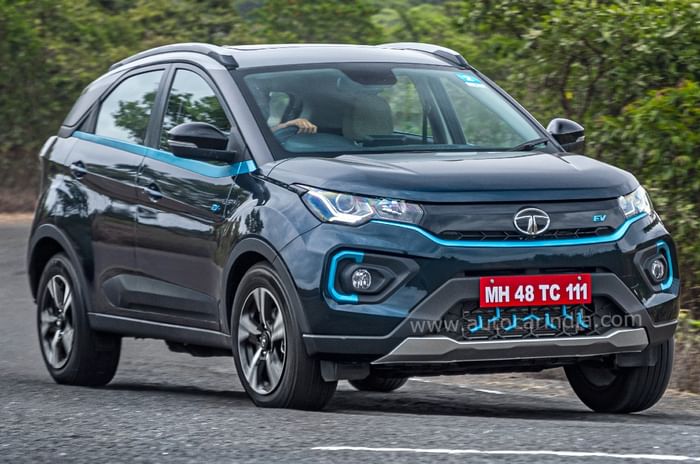
The springs and dampers have been reworked to manage the extra 100kg weight. Even though its ride is a bit on the stiffer ride, it continues to flatten imperfections and potholes well. Although, side-to-side or rocking movements on broken roads feel a bit more prominent now. While the steering is a tad heavier, the turn-in remains sharp. Couple that with tight body control and a low centre of gravity, and it makes for a fun handler. You can now tackle corners with a greater degree of confidence, especially because the newly added ESP regulates wheel spin and helps the driver maintain a much cleaner line around long, fast corners. The hill-hold and auto hold functions work well too. When at a standstill and in Drive, they prevent the car from rolling forward or backward once you’ve lifted your foot off the accelerator.
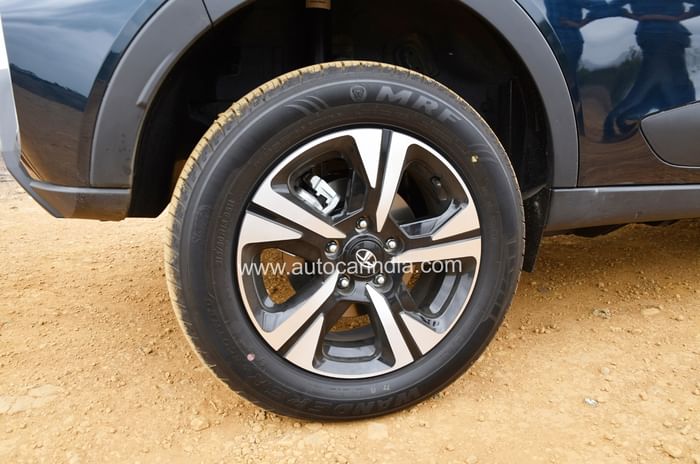
In addition to all-wheel disc brakes, the Max also features an iVBAC or intelligent Vacuum-less Boost and Active Control device, which electronically controls the brake pressure, thereby ditching the standard brake booster set-up. In the real world, that translates into a very consistent brake pedal feel, and zero pedal vibrations under hard braking even when the ABS kicks in. Despite the all-wheel disc brake set-up, in our panic braking tests from 80-0kph, the Nexon EV Max stops in a longer, 29.3 metres, compared to the standard EV’s 27.3 metres, on account of the added weight.
Tata Nexon EV Max: Has range increased?
Coming to the most important aspect of this review – the range. In our real-world tests, we managed a rather respectable 263km of overall range, which is 55km higher than the standard Nexon EV’s average range, but is only 60 percent of Tata’s advertised figure of 437km.
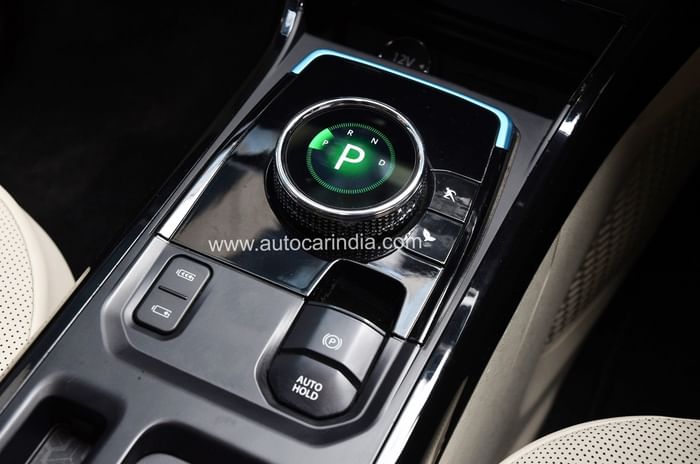
The efficiency we achieved is 6.6km per kWh in the city and 6.4km per kWh on the highway, translating to a range of 266km and 259km, respectively. The test was conducted in Eco mode, with regenerative braking set to level two, and climate control at 22degC in full-automatic mode. There were two people in the car and periodic driver swaps further neutralised any variance in driving pattern. It’s important to note that our test protocol and driving style which involves some hard driving is designed for worse case conditions. Hence, owners can expect higher range figures if they adopt a more economical driving style.
| Tata Nexon EV Max range as tested | |
|---|---|
| Environment | Range |
| City | 266km |
| Highway | 259km |
| Overall | 263km |
Tata Nexon EV Max real-world range tested, explained
Tata Nexon EV Max: What about charging?
As standard, the car is available with a 3.3kWh AC charger that’ll take the battery from 0-100 percent in 15-16 hours. This time around, customers get the option to purchase a 7.2kWh wall-mounted AC charger, at a premium of Rs 50,000, which charges the battery from 0-100 percent in 6.5 hours. Using a 50kW DC fast charger, Tata says that the Nexon EV Max’s battery will go from 0-80 percent in just 56 minutes, however in the real-world, its battery management system accepts charge only at around 28-29kW at max.
During our test, we plugged the Nexon EV Max to a 25kW DC fast charger at a Tata Power charging station. It replenished 10.93kWh, which is about 27 percent of the battery, in just 30mins, at a cost of Rs 196.74.
Tata Nexon EV Max: What new features does it offer?
The Nexon EV Max is available in XZ+ and XZ+ Lux variants, which are priced at Rs 17.74 lakh and Rs 18.74 lakh, respectively, making them exactly Rs 1.54 lakh pricier than the corresponding 30.2kWh variants. The Max packs in a host of safety kit like ESP, traction control, hill-start assist, hill-descent control, electronic parking brake with auto hold function, tyre pressure loss indicator and rear disc brakes, all of which are missing in the smaller battery version.
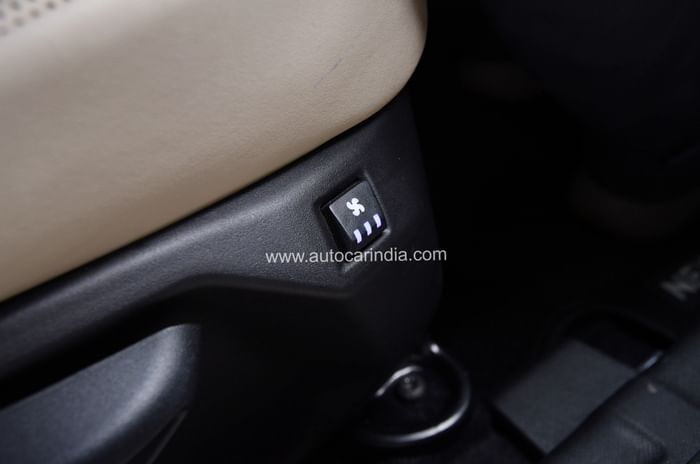
In addition, it also gets new 16-inch diamond cut alloys, a dual-tone roof (as standard), wireless charging, cruise control, drive modes and four levels of adjustment for regenerative braking. The top-spec XZ+ Lux variant not only packs in a sunroof, but it also gets ventilated front seats, a built-in air purifier and an auto dimming inside mirror. Still missing from the range are side and curtain airbags.
Tata Nexon EV Max: Should I buy one?
For a price premium of just 9-9.5 percent over a 30.2kWh Nexon EV, the Max packs in a 33 percent larger battery, which offers 26 percent better real-world range, and ups the safety game with crucial kit such as ESP, hill-start assist, rear disc brakes, etc. In addition, the XZ+ Lux variant also features upmarket kit like ventilated seats and an auto dimming mirror, which aren’t available with the lesser battery version of the Nexon. All these neither come at the cost of performance, nor at that of ride comfort. So, what’s not to like then? Tata’s advertised range of 437km seems far too optimistic in real-world driving conditions; the larger battery pack creeps into cabin space and results in a knees-up seating for rear passengers (which isn’t the case with the 30.2kWh version); the drive selector is slow to respond; and despite being so well equipped it misses side and curtain airbags. But are these deal-breakers? Not at all! In summary, this range extender (pun intended) simply builds onto the existing strengths of the Nexon EV’s winning formula and broadens its appeal further by giving buyers yet another compelling reason to go electric.
Also see:




































